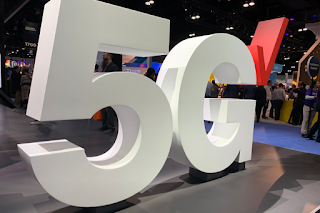HyperLight, a start-up based in Cambridge, MA developing thin-film lithium niobate (LN) photonic integrated circuits (PICs), announced breakthrough voltage-bandwidth performances in integrated electro-optic modulators.
HyperLight says its electro-optic PIC could lead to orders of magnitude energy consumption reduction for next generation optical networking.
Current electro-optic modulators require extremely high radio-frequency (RF) driving voltages (> 5 V) as the analog bandwidth in ethernet ports approaches 100 GHz for future terabits per sec capacity transceivers. In comparison, a typical CMOS RF modulator driver delivers less than 0.5 V at such frequencies. Compound semiconductor modulator drivers can deliver voltage > 1 V at significantly increased cost and energy consumption but still fall short to meet the optimum driving voltage. The limited voltage-bandwidth performance in electro-optic modulators poses a serious challenge for meeting tight power consumption requirements from network builders.
HyperLight's integrated electro-optic modulator is capable of 3-dB bandwidth > 100 GHz, a previously impossible voltage-bandwidth achievement. The results are described in a manuscript entitled “Breaking voltage-bandwidth limits in integrated lithium niobate modulators using micro-structured electrodes,” published in Optica on March 8th, 2021.
“We believe the significantly improved electro-optic modulation performance in our integrated LN platform will lead to a paradigm shift for both analog and digital ultra-high speed RF links,” said Mian Zhang, author, CEO of HyperLight. “For example, using sub-volt modulators for digital applications, high speed electronic drivers may have largely reduced gain-bandwidth requirements or possibly be completely bypassed with modulators directly driven from electronic processors. This would save building and running costs for network operators. For RF links, the low-voltage, high bandwidth and excellent optical power handling ability could enable sensitive and low noise millimeter wave (mmWave) photonic links in ultrahigh-frequency bands.”















